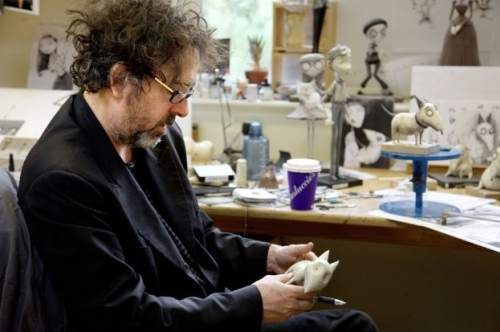For those who read this site regularly, you know I love B movies. There’s often times I feel like I’m part of a very exclusive club that gets this stuff, after all, when Quentin Tarantino did Grindhouse, nobody even knew what a double bill was, the drive-ins are certainly long gone, and the films of people like Ed Wood stopped playing on late night TV a long time ago.

So I was thrilled when Tim Burton mentioned one of my all time favorite B movies, Frankenstein’s Bloody Terror, during a recent interview with MTV.
It’s doubtful a lot of people today would know that reference in a million years, and funny enough, I actually wrote about it for TG because it was in 70mm and 3D. (Bloody Terror is a lot like today’s 3D that takes you deeper in the movie instead of tons of “outies” flying in your face).
This shouldn’t have surprised me so much, because after all Tim Burton did make the movie Ed Wood, and a lot of his work has a schlocky side to it – in a good way of course. He also was very inspired by the British Hammer horror films, which were once considered trash by high English society and are now ranked as classics, same with the work of Mario Bava (Black Sunday, Kill Baby Kill), the Italian meistro of horror who was also a big influence on Martin Scorsese.
Of course, probably more than anybody, Quentin Tarantino has shown how much low budget B movies have influenced modern cinema, as he’s drawn heavily from them himself.
A lot of people don’t see the entertainment value in these films, but for the fans who do, we know what we love about them. They’re usually wild, funny (intentionally and unintentionally), outrageous, very un-P.C. even by today’s standards, shocking, balls out fun. There’s also a lot of interesting things you’ll discover in them if you watch carefully enough.
Back in the day, studios would lecture filmmakers that a comedy had to be totally funny, and a serious moment or a downbeat ending would just confuse people, or lose the audience. Grindhouse movies didn’t have to follow the rules, and they often had the most outrageous twists and turns you’d never expect from mainstream films.
As Tarantino recalled in the book What It Is, What It Was, “I think if you look at my work, it’s not really taking that much from the mainstream cinema. What I’ve taken from exploitation films in general is that anything can happen.”
Back in the summer of 2007, Tarantino held a months long grindhouse film festival with prints all out of his personal collection. Among the classics shown were Slithis, The Female Bunch, The Blood Spattered Bride (the title of which became one of the chapter names in Kill Bill), White Line Fever, and many others.
But when it’s all said and done, you ultimately go to see these movies to have a great time, and more often than not, that’s what they deliver. If you don’t know how to have fun, a grindhouse show ain’t for you. Go ahead, treat it with snobby condescension, treat it like it’s beneath your film snob sensibilities. You have no idea what you’re missing.






